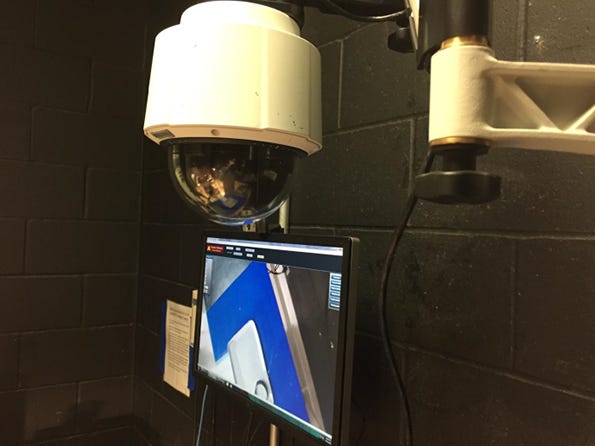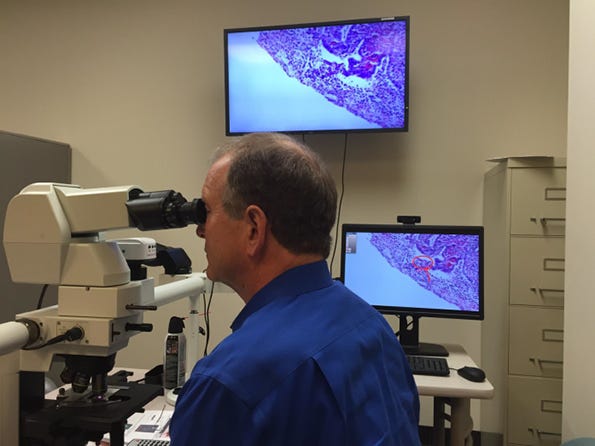Telepathology: a new frontier for global swine diagnostics training and service
June 29, 2015

The term “telepathology” refers to the practice of pathology at a distance using electronic transmission of digital images for education or diagnostic consultation. In the swine industry, this technology offers opportunities for web-based diagnostic training and services worldwide through a dynamic real-time platform.
The University of Minnesota College of Veterinary Medicine and Veterinary Diagnostic Laboratory are leading an international telepathology partnership to improve pathology training for swine diagnostics. Pilot projects have currently been conducted with partners in China (Jilin University, and pork producers Besun and Muyuan) and Uganda. The goals for these initial projects are to establish the telepathology systems at the U of M and its partners and develop web-based training and services modules.
Two sets of equipment have been used for macroscopic and histopathological evaluation, a grossing camera (iMedHD-pro grossing) and microscope mounted camera (iMedHD-pro scope). Equipment provider “Remote Medical Technologies” uses a live-streaming 1080p high-definition web-based technology with a “host” unit (grossing or microscope mounted camera). “Guests” connect via web-link and interact live via browser interface, which provides annotation, image and video capture. The main challenges are establishing a consistent interface with partners and ensuring internet bandwidth requirements for overseas collaborators and guest viewers, along with working in real-time across time zones.
The promising expansion of the telepathology program will open up important opportunities for pathologists, scientists and other professionals involved in the U.S. swine industry by providing global diagnostic services, especially in certain developing countries with shortages of pathologists and training needs for swine veterinarians.
Exchanging experience regarding aspects of diagnostics, clinical presentations and epidemiology of swine diseases in different production systems worldwide.
Understanding the dynamic and distribution of exotic swine diseases in different countries and production systems in order to predict potential future risk of introduction in the U.S. industry.
Shared interests and need to synergize pathology and diagnostic expertise across the swine industry worldwide will be valuable to drive science-based decisions in swine health challenges faced by the U. S. food animal industry.
 Grossing camera linked to “host” computer workstation.
Grossing camera linked to “host” computer workstation.
 Multi-head microscope with high-definition digital camera linked to “host” desktop computer workstation.
Multi-head microscope with high-definition digital camera linked to “host” desktop computer workstation.
You May Also Like



